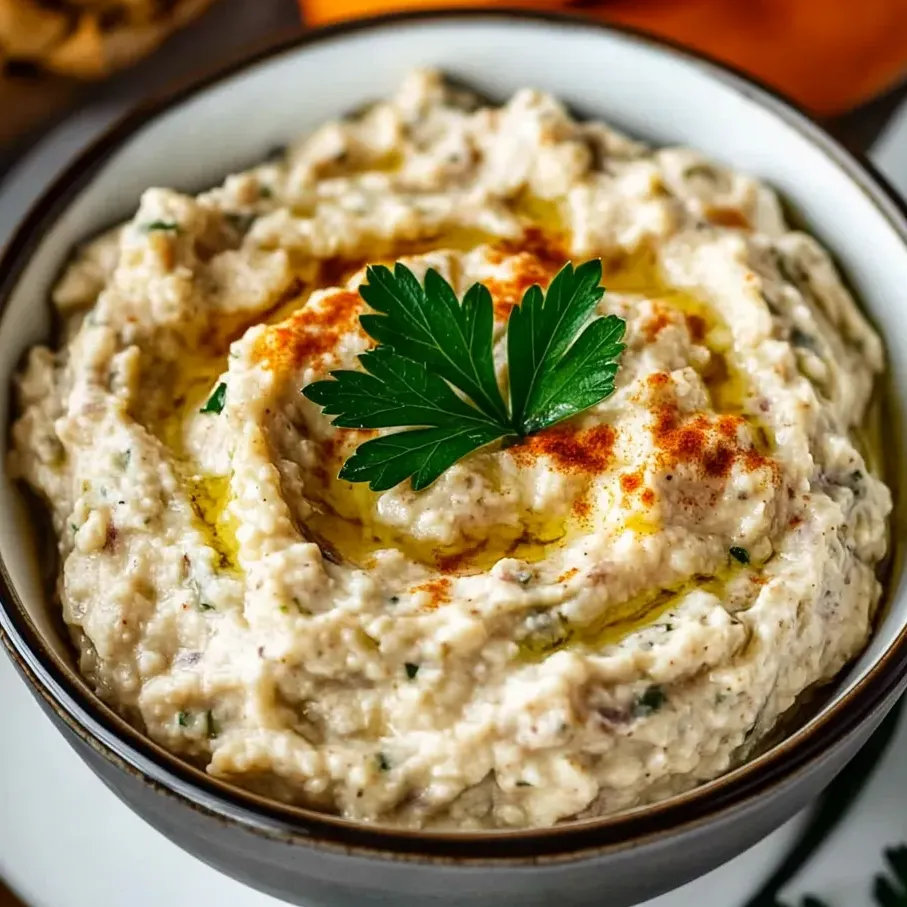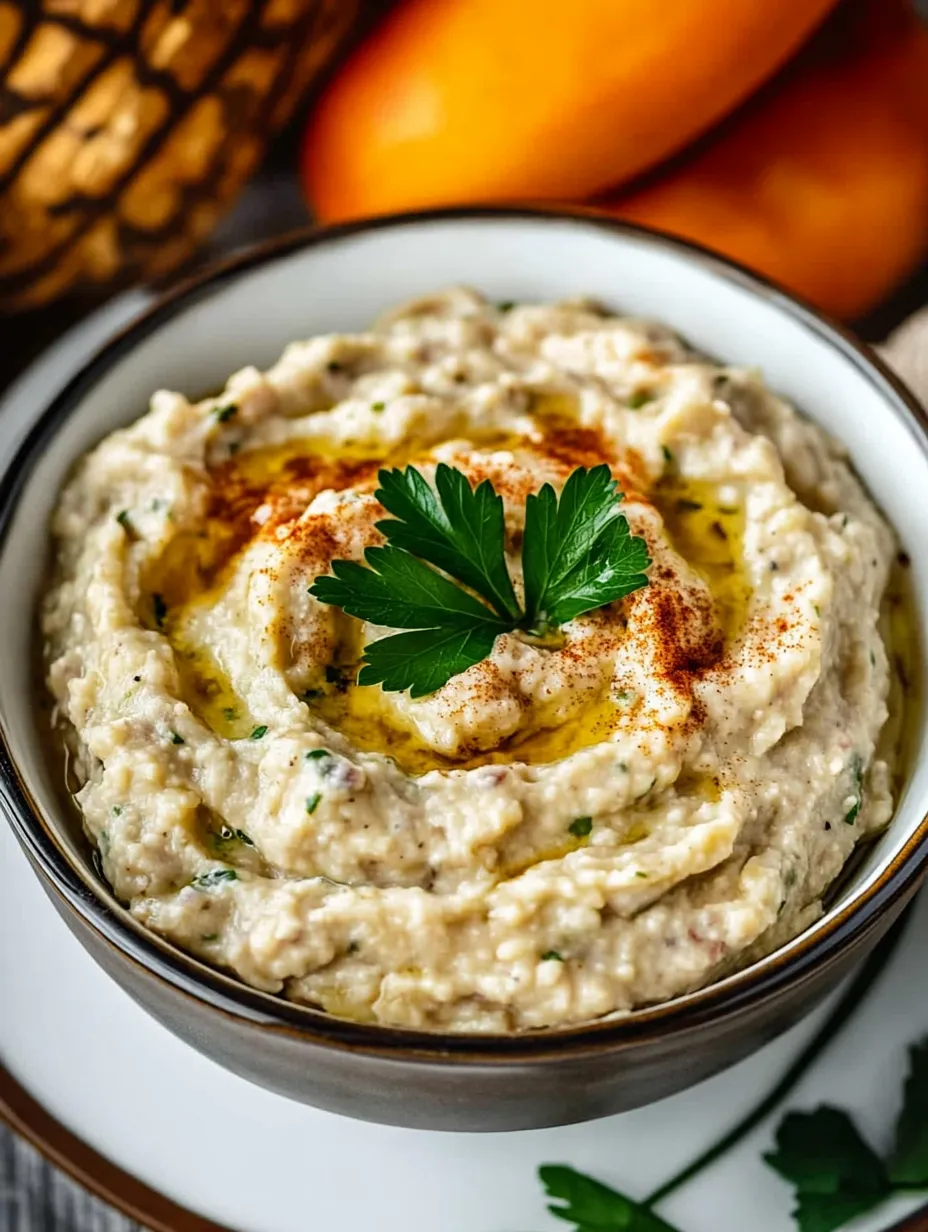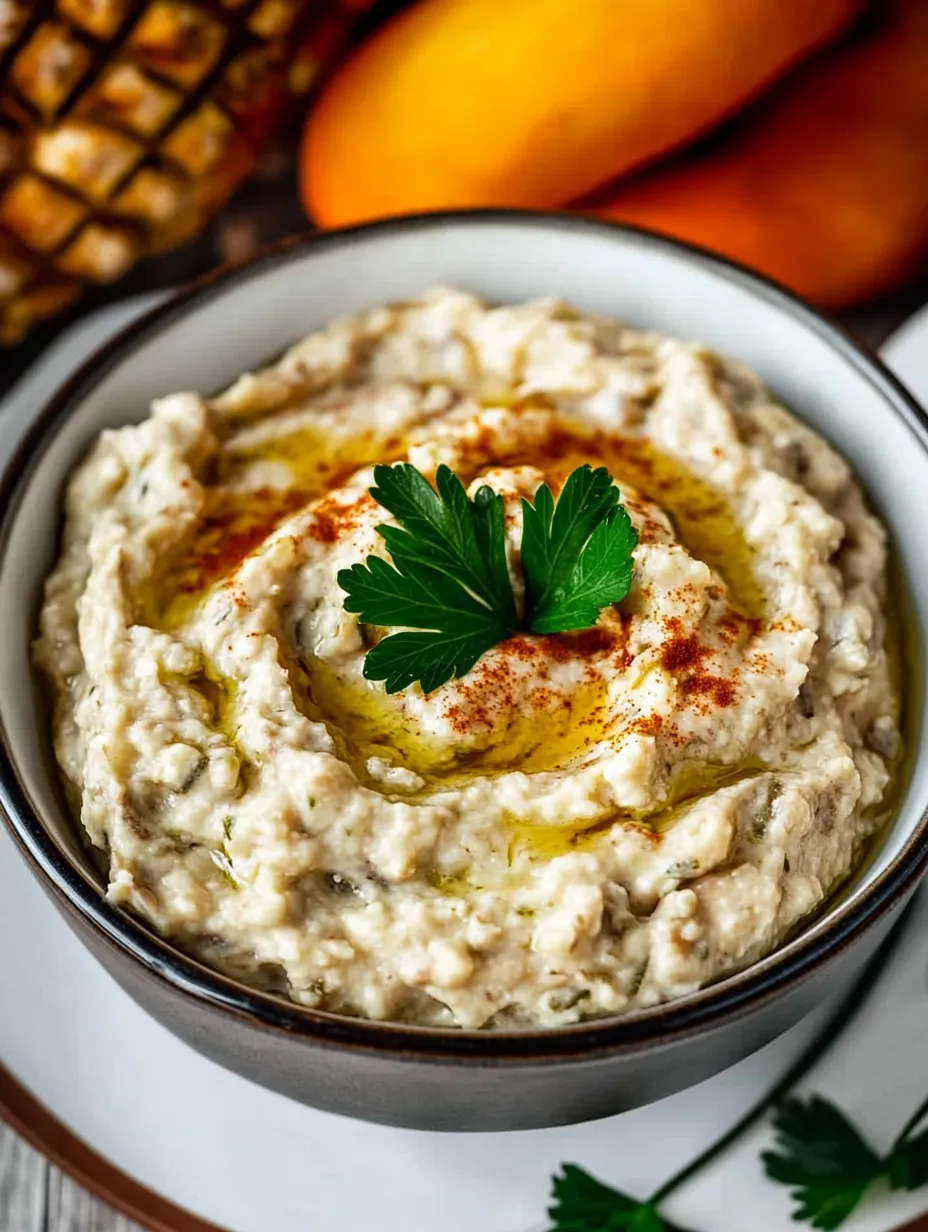 Save
Save
This smoky, creamy baba ganoush transforms humble eggplants into a Middle Eastern delight that will have everyone asking for your secret. After discovering this recipe during my travels through Lebanon, I perfected it at home and now it's my go-to appetizer whenever I entertain guests who appreciate bold flavors.
I first served this at a summer garden party where it disappeared within minutes. The compliments were so enthusiastic that I now keep roasted eggplant in my freezer to whip this up whenever unexpected guests arrive.
Ingredients
- Fresh eggplants: choose firm glossy ones without soft spots for the best smoky flavor
- Extra virgin olive oil: a good quality one makes all the difference in the final taste
- Tahini: provides creaminess and authentic flavor look for roasted variety for deeper notes
- Fresh garlic: adds essential pungency mince it finely for even distribution
- Ground cumin: brings warm earthiness that complements the smokiness
- Fresh lemon juice: balances the richness with brightness meyer lemons work wonderfully if available
- Salt and cayenne: enhance all other flavors adjust according to your heat preference
- Fresh parsley: adds color and a fresh herbal finish
Step-by-Step Instructions
- Prep the eggplants:
- Slice your eggplants lengthwise creating two equal halves. Line your baking sheet with foil to prevent sticking and make cleanup easier. Use a fork to poke several holes in the flesh this prevents them from exploding in the oven. Be generous with the olive oil coating to help the skin char properly.
- Roast to perfection:
- Place your eggplants cut side down at 400°F. This position allows the flesh to steam while the skin chars. The 35-40 minute cooking time is crucial you want them completely soft when pressed with a finger. Undercooked eggplant will make your dip bitter and difficult to blend.
- Cool and scoop:
- Patience is key here. Let the eggplants cool for a full 15 minutes. Rushing this step will make handling difficult and you might burn your fingers. Use a large spoon to gently scoop the flesh away from the charred skin. The flesh should pull away easily if properly cooked.
- Combine and mash:
- Add all remaining ingredients to your eggplant bowl keeping a tablespoon of olive oil reserved for the final presentation. Using a fork not a blender is traditional and gives the perfect texture with some small chunks remaining. Mash and stir thoroughly until the mixture looks cohesive but maintains some texture.
- Final touches:
- Transfer to a serving bowl and create a small well in the center with the back of a spoon. Pour the reserved olive oil into this depression for both flavor and visual appeal. Sprinkle with additional parsley and perhaps a pinch of cayenne for color contrast.

The tahini is truly the magical ingredient in this recipe. I once tried making baba ganoush without it when I'd run out, and while still tasty, it lacked that distinctive richness that makes this dip so addictive. My grandmother taught me that quality tahini should pour easily and taste nutty without bitterness.
Flavor Variations
Traditional baba ganoush keeps things simple, but don't be afraid to experiment. A sprinkle of sumac adds a beautiful deep red color and lemony tang. For a more robust version, add a teaspoon of pomegranate molasses for sweetness and depth. Some regions include fresh mint or a dollop of Greek yogurt for creaminess. Each variation maintains the soul of the dish while allowing you to make it your own.
Serving Suggestions
Baba ganoush goes far beyond just dipping. Spread it on flatbread and top with sliced cucumber and radishes for a quick light lunch. Use it as a sandwich spread instead of mayonnaise for a flavor boost. For dinner, try a dollop beside grilled meats, especially lamb or chicken. The smoky eggplant complements the charred flavors beautifully. I've even seen it used as a base for grain bowls topped with roasted vegetables and fresh herbs.
Storage Tips
This dip actually improves with time as the flavors meld together. Store in an airtight container in the refrigerator for up to 5 days. The olive oil may solidify slightly when cold, so remove it from the refrigerator about 30 minutes before serving. For longer storage, freeze portions in small containers for up to 3 months. Thaw overnight in the refrigerator and stir well before serving. A fresh drizzle of olive oil and sprinkle of herbs will revive it beautifully.

Frequently Asked Cooking Questions
- → Can I make baba ganoush without tahini?
While tahini is traditional and provides the distinctive nutty flavor, you can substitute with Greek yogurt for a tangier version, or use a small amount of sesame oil to maintain some of the sesame notes. The texture and flavor profile will be different, but it can still be delicious.
- → How long does homemade baba ganoush last in the refrigerator?
When stored in an airtight container, homemade baba ganoush will keep for 4-5 days in the refrigerator. The flavors often improve after a day as they meld together. If the dip separates slightly, simply stir before serving.
- → Why is my baba ganoush bitter?
Bitterness can come from the eggplant skin or from using too much tahini. Ensure you're only scooping the flesh of the eggplant and avoiding the skin. Also, start with less tahini and adjust to taste. Using very fresh eggplants and adding enough lemon juice and salt can help balance any natural bitterness.
- → Can I freeze baba ganoush?
Yes, baba ganoush can be frozen for up to 3 months in an airtight container. The texture might change slightly upon thawing - it may become a bit more watery. To restore the consistency, drain any excess liquid and stir vigorously before serving.
- → How can I make my baba ganoush smokier?
For a smokier flavor, you can char the eggplants directly over a gas flame or on a grill before finishing them in the oven. Alternatively, add a drop or two of liquid smoke to the finished dip, or include a small amount of smoked paprika along with the cumin.
- → What can I serve with baba ganoush besides pita bread?
Baba ganoush pairs wonderfully with many items including fresh vegetables like cucumber, bell peppers, and carrots; crackers or flatbreads; as part of a mezze platter with hummus and olives; spread on sandwiches or wraps; or as a accompaniment to grilled meats and vegetables.
